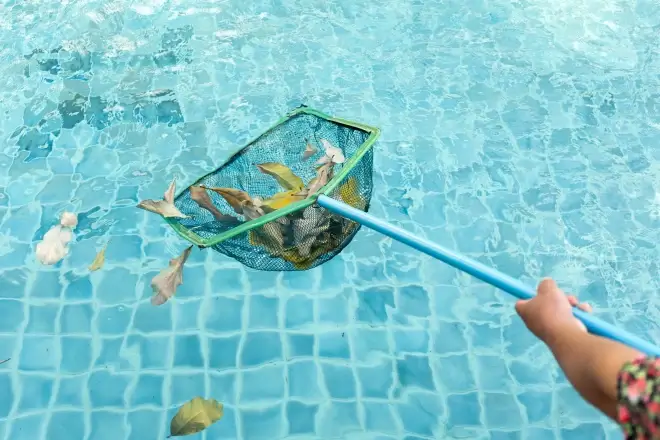Businessnewstips.com Guide on How to Clean a Pool That Hasn’t Been Cleaned in Years

Maintaining a pool is essential for hygiene, aesthetics, and longevity. If you have a pool that hasn’t been cleaned in years, the process might seem daunting. However, with the right steps, tools, and patience, you can restore your pool to its sparkling glory. This guide from Businessnewstips.com provides a comprehensive step-by-step approach to cleaning a neglected pool.
Assessing the Pool’s Condition
Before diving into the cleaning process, assess the current state of your pool. This includes:
- Water Clarity: Check how cloudy or murky the water is.
- Debris Accumulation: Evaluate the amount of leaves, dirt, or other debris.
- Algae Growth: Look for signs of algae, which can appear as green, yellow, or black patches.
- Structural Damage: Inspect the pool walls, floor, and equipment like the pump and filters for cracks or malfunctions.
Understanding the pool’s condition helps determine the necessary cleaning tools and processes.
Tools and Supplies Needed
To clean a pool that has been neglected for years, gather the following:
Cleaning Tools:
- Pool skimmer net
- Pool vacuum (manual or automatic)
- Pool brush (for walls and floors)
- Algae scraper
- Leaf rake
- Bucket and measuring cups
Chemicals:
- Chlorine
- Pool shock treatment
- Algaecide
- pH increaser and decreaser
- Pool water testing kit
Safety Equipment:
- Gloves
- Goggles
- Protective clothing
Step-by-Step Pool Cleaning Guide
1. Drain the Pool Water (If Necessary)
If the pool water is extremely contaminated or contains debris that cannot be removed easily, draining might be essential. Follow these steps:
- Use a submersible pump to empty the pool.
- Ensure proper disposal of the water, adhering to local regulations.
- Leave a small amount of water to prevent pool liner damage.
Pro Tip: Avoid draining the pool during rainy seasons to prevent structural damage.
2. Remove Debris
Manually remove large debris like leaves, twigs, and trash using a skimmer net or leaf rake. Be thorough to make the chemical cleaning process more effective.
3. Scrub and Clean Pool Surfaces
Using a pool brush, scrub the walls and floor to remove algae, dirt, and stains. For stubborn algae, use an algae scraper or apply a specialized cleaner.
4. Check and Clean the Filter System
Inspect the pool’s filter system (sand, cartridge, or DE filter). Clean or replace the filters as needed to ensure efficient water circulation and filtration.
5. Refill the Pool
Once the debris is cleared and the surfaces are scrubbed, refill the pool with fresh water. Use a garden hose with a pool water filter attachment to reduce contaminants.
Balancing the Pool’s Chemistry
1. Test the Water
Use a pool water testing kit to measure the following:
- pH level (ideal range: 7.2-7.8)
- Chlorine level
- Alkalinity
- Calcium hardness
2. Adjust pH Levels
- Use a pH increaser or decreaser to balance the pH.
- Ideal alkalinity levels range from 80 to 120 ppm.
3. Shock the Pool
- Add a pool shock treatment to eliminate bacteria and organic contaminants.
- Follow the product’s instructions carefully for dosage.
4. Add Algaecide
- Apply algaecide to prevent future algae growth.
- Brush the pool again after applying to spread the solution evenly.
Restoring Pool Equipment

1. Inspect the Pump and Motors
- Ensure the pump and motors are in good working condition.
- Replace any damaged parts.
2. Check Pool Accessories
- Inspect ladders, diving boards, and lights for wear and tear.
- Repair or replace faulty equipment to ensure safety.
Ongoing Maintenance Tips
To avoid letting your pool fall into neglect again, follow these maintenance tips:
1. Regular Cleaning
- Skim the pool daily to remove floating debris.
- Vacuum the pool weekly to prevent dirt buildup.
2. Chemical Balancing
- Test the water’s chemistry every week.
- Adjust chlorine, pH, and alkalinity levels as needed.
3. Filter Maintenance
- Clean or replace filters every month.
- Backwash sand or DE filters as required.
4. Cover the Pool
- Use a pool cover to keep out debris when the pool is not in use.
Troubleshooting Common Issues
1. Persistent Cloudy Water
- Check if the filter is working efficiently.
- Use a clarifier to bind small particles for easier removal.
2. Algae Recurrence
- Increase chlorine levels temporarily.
- Brush the affected areas and use an algaecide.
3. Stains on Pool Surfaces
- Use specialized stain removers.
- Ensure balanced water chemistry to prevent new stains.
Conclusion
Cleaning a pool that hasn’t been maintained in years requires effort, the right tools, and patience. Following this guide from Businessnewstips.com ensures a systematic approach to restoring your pool’s pristine condition. Regular maintenance will save you time, money, and effort in the long run, making your pool a sparkling oasis for years to come.




